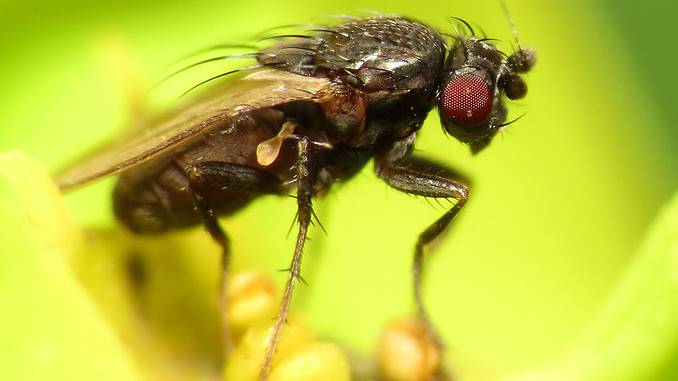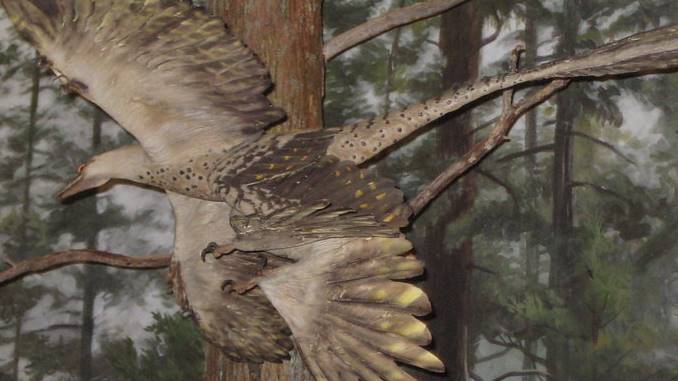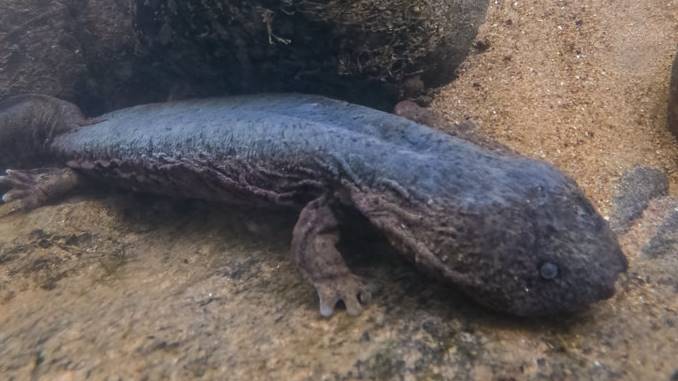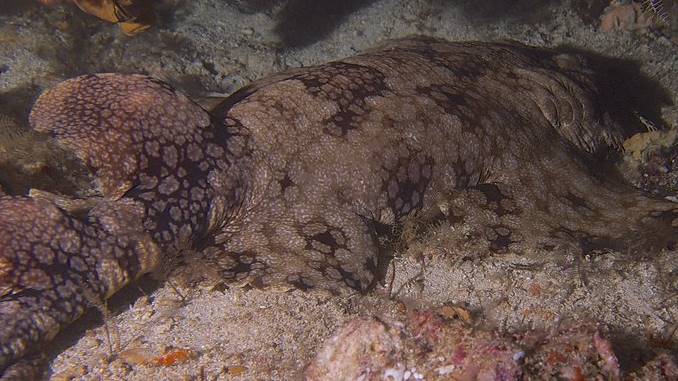Disclaimer: The information presented below is for general informational & educational purposes only. Always consult with animal professionals in case of specific concerns.
Nature is full of fascinating things, and the names of animals are also something interesting you should explore.
Creatures did not have names as we know them now from when they first came on the planet. They had a name given by the scientist.
Whether animals or plants, some of them will have odd names, be it too long or too short.
This article will show you animals with long names you may have never seen before. This list will surely make you fascinated.
Let’s take a look.
List Of Animals With Long Names
Wait any longer. Here is a complete list of animals with long names you should know:
#1. Parastratiosphecomyia Stratiosphecomyioides
This name is the longest, with 43 letters.
Dr. J. Strati, who first identified the parastratiospheconomyia genus in 1855, was the person giving this species this name.
Stratiidae was the name given to these animals when Dr. J. Strati first discovered them.
After that, he changed this term to Stratiidae when he split the family into two smaller families, including Sphaeroceratidae and Stratiidae.
In 2012, the scientists changed this genus name to Parastratiosphaeria from Stratiosphecomyium.

#2. Micropachycephalosaurus Hongtuyanensis
These two words include 29 letters.
Have you ever known that the name micropachycephalosaurus comes from the shape of its head?
It is a member of the Microraptoridae family, and its name implies a lizard with a thick head. Its term has 37 letters.
Microraptors are little dinosaurs discovered in China. Around 85 to 70 million years ago, they used to exist.
The creatures with four wings possessed long arms, short, thick legs, and a big head. The teeth were extremely sharp, with a pointed tip.

#3. Griseotyrannus Aurantioatrocristatus
This phrase contains 36 letters.
Griseotyrannus aurantioatrocristatus is a genus of South American birds. These species are also called the crowned slaty flycatchers.
Previously, these creatures belonged to the Empidonomus genus like a variegated flycatcher. However, they are the only member of Griseotyrannus.
Yellow-bellied flycatchers are a subspecies of this bird group. The male birds feature an elongated tail, vivid orange underparts, and black beak.
Read more: Bird With Long Beak (18 Birds With The Longest Beaks)
#4. Cryptobranchus Alleganiensis
This scientific term has 29 letters.
Cryptobranchus alleganiensis species are native to the Nearctic region. They are freshwater salamanders that inhabit streams.
Their torso and head are flat, with slimy skin and small dorsal eyes. Like other salamanders, their legs are short.
The front legs have four toes while the back ones have five. For propulsion, they have a keeled tail.

#5. Eucrossorhinus Dasypogon
The scientific name has 24 letters.
Eucrossorhinus dasypogon is the scientific term for the tasseled wobbegongs.
The term derives from the Aboriginal phrase for largemouth in Australia.
These creatures are enormous Australian fish. They are the only carpet shark species in the Orectolobidae family.
The body of the fish is long, and the tail is short. They inhabit New Guinea and Australia’s shallow seaside waters.
The animals are nocturnal, which means they are more active at nighttime. They swim towards the reef to look for food.

#6. Wunderpus Photogenicus
This term includes 23 letters.
Wunderpus Photogenicus, like Wunderpus Octopus, is a cephalopod mollusk belonging to the Sepiolidae family.
Johann Friedrich Meckel, a German naturalist, discovered these animals in 1831. So, he gave them a scientific name following his name.
The species reside at depths of over 1000 m in the ocean depths such as in Indo-Malayan shallow waters.
They use two primary feeding methods, including probing and web-casting. Small crustaceans like crabs and shrimp make up the majority of their food.
If you are curious about its feeding behaviors, you can watch this video:
#7. Chaetophractus Vellerosus
This word includes 26 letters.
Chaetophractus Vellerosus is the scientific name for the screaming hairy armadillo species.
The scientists give this name to these creatures following real animals known as Hairy Armadill.
Mexico and South America are home to hairy armadillos. They are burrow dwellers who devour insects.
You can easily find these mammals, mainly in South America. They also have another name, pampas deer, which refers to their habitat of grasslands.
Chaetophractus Vellerosus and armadillos are not dangerous to human and other animals in general.
They’re nocturnal species that sleep in caves during the day. Their primary sources of nutrition include roots, fruits, tubers, or seeds.
#8. Kimmeridgebrachypteraeschnidium Etchesi
This name includes 40 letters.
Kimmeridgebrachypteraeschnidium etchesi is a Jurassic Period extinct dragonfly discovered in 2003. It lived 150 million years ago.
The discoverer, Steve Etches, is the person to give the species this long name.
Kimmeridgebrachypteraeschnidium etchesi is the genus named after the place where Steve Etches discovered it (Kimmeridge).
It is among the longest and most challenging to pronounce fossil terms ever identified.
Read more: Animals With 6 Legs (9 Amazing Six-Legged Species)
FAQ’s
How Do Animals Get Their Names?
Scientific names serve as a partial taxonomy map of evolutionary links between animals and plants taxa.
The names chosen reflect our knowledge of the genesis and extent of the relationship among various species.
They also aid in maintaining consistency in the names of species. Most of the terms are Latin or Greek in origin.
There are two leading scientific names for every plant or animal.
The first name relates to the genus, whereas the second one refers to a specific species within that genus.
Scientists also give animals scientific names to mark the origin they come from or to commemorate someone.
Which Animal Has The Longest Name?
Parastratiosphecomyia stratiosphecomyioides is the longest official scientific name for animals in this genus. It consists of 43 letters.
These creatures, also called the soldier flies, belong to the stratiomyid fly group. Their abdomen and thorax are shiny green.
What Reptile Has The Longest Name?
The southern Titiwangsa bent-toed gecko is the reptile with the most extended term of any alive reptile. This species primarily lives in peninsular Malaysia.
This term has 31 letters.
What’s The Longest Dinosaur Name?
Micropachycephalosaurus is the longest name with 29 letters for dinosaur species. This term refers to a lizard type with a small thick head.
The archaeologists discovered its fossils in China. Until 1978, a Chinese paleontologist gave this long term with 29 letters for this dinosaur genus.
What Insect Has The Longest Name?
Parastratiosphecomyia stratiosphecomyioides comes from an insect species of a fly group in the Stratiomyidae family. These animals live mainly in Thailand.
The term consists of 43 letters.
What’s The Longest Plant Name?
Kew Plant List reported that Ornithogalum adseptentrionesvergentulum is the plant with the longest term with 38 letters. It is a tiny asparagus species.
In A Nutshell
This article has shown you an ultimate list of animals with long names.
The most prolonged phrase is Parastratiosphecomyia Stratiosphecomyioides, an insect species of a fly group in the Stratiomyidae family.
Hopefully, this post will be helpful for you. If you know any other creatures having long names, don’t hesitate to add them to this list.
Thanks for taking the time to read this article.

Hi, my name is John, and I’m an animal lover. I’ve been fascinated with the animal kingdom since I was 5 years old, and my passion keeps growing bigger as I age. And this blog is where I share my researches and passion with animal lovers all around the world.
